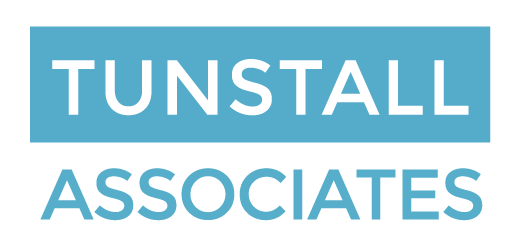As a follow up to our case studies on crisis management, it’s now time to turn to media and communications.
In the old days before social media, there was time to reflect on exactly how to approach a crisis. There was time to seek advice and support from the right people and deliver a polished press release suitably reviewed by key stakeholders. Today’s situation has changed beyond measure. Key issues are time pressures, the insatiable demand for news and having to handle the veritable ‘fire hose’ of questions coming back. But also there is nothing like ‘the internet’ for behaving in a trollish manner when confronted with a mis-step, error, or a downright lie – particularly when it concerns a large company or brand.
Five or ten years ago media advisors might have said “Don’t worry everyone on social media are 16 to 25 year olds, in a week they will have forgotten and moved on.” In some ways this was true. But now many active users of these sites are senior decision makers themselves and the mud sticks.
The power of these new forms of communication was never more apparent than during the Arab Spring with its astonishing impact right across the Middle East as city after city became a flashpoint. One can only speculate how other events in political history may have turned out had Twitter and its equivalents been available at the time. 1989 Tiananmen Square comes to mind in particular. As both AI and social media evolve, the ability for interest groups to manipulate messaging is growing exponentially. In the political space, there is a huge opportunity for the manipulation of voter opinions. For the corporate world, similar threats and opportunities play out.
In this section we work through a few selected examples where the internet media phenomenon played a huge role. In many cases the story turned on a whim or passing comment. The key is speed. Even in the last twelve months the speed of response has accelerated until now, if the corporation is not ready prior to the incident or accident there is no way to catch up the lost ground. Critically the crisis these days may also arise from the actions of those within the organization too.
In the following two cases the actions of perhaps relatively junior members of staff left the reputation of the whole brand in the balance:
American Apparel and HMV – Who runs your Twitter account?



In the American Apparel instance it would seem a relatively junior team member thought that Hurricane Sandy would be a great time to launch a flash sale as everyone would be at home with nothing to do. In theory correct, but in reality not the most sensitive approach when many people were facing life threatening challenges from a windstorm that ultimately claimed over 200 lives and caused around $75 billion in damages. The internet spotted the foolishness of this really quickly and castigated the company accordingly. One of the many Tweets condemning their actions is shown above.
The second example at HMV provides a stunning example of digital migrants bumping up against digital natives and losing control of the situation totally. When HMV UK started laying off significant numbers of staff in early 2013 the marketing department ‘forgot’ to reclaim control of the Twitter account from those being fired. The ‘mass execution’ of 60 members of the marketing team was live tweeted on the corporate feed and the departing employees created a dedicated hashtag #hmvXFactorFiring for the event. Tweets loved by the internet included “We’re live tweeting from HR where we’re being fired! Exciting!” “Just heard our Marketing Director (he’s staying, folks) ask “How do I shut down Twitter?”
Justine Sacco – Personal & Business Incautious Behaviour
In 2013 Justine Sacco was senior director of corporate communications at IAC, a Fortune 1000 company specializing in media and the internet. She had been tweeting jokingly about her trip and only had 170 followers. She joked about a German passenger and then about people with bad teeth in London. But her final tweet before she boarded a plane in Heathrow on December 13th 2103 for the long journey to Capetown, South Africa had an astonishing impact. As she noted afterwards, it was supposed to be an ironic tongue in cheek comment on peoples’ general ignorance but taken out of context: “Going to Africa. Hope I don’t get AIDS. Just kidding. I’m white!” had totally unexpected consequences.

Justine Sacco boarded the plane for the 11 hour flight. When the plane landed and was taxiing on the runway, she turned on her phone. She immediately received texts from friends she hadn’t spoken to since school sending commiserations amongst others and a text from her best friend asking her to call immediately. When she spoke to her she found out she had become the number one Twitter trend globally whilst in the air. Some of the most pertinent reactions were as follows:
“In light of @Justine-Sacco disgusting racist tweet, I’m donating to @care today” “How did @JustineSacco get a PR job?! Her level of racist ignorance belongs on Fox News. #AIDS can affect anyone!” “I’m an IAC employee and I don’t want @JustineSacco doing any communications on our behalf ever again. Ever.”
IAC, her employer was the owner of The Daily Beast, OKCupid and Vimeo. Their Tweet said “This is an outrageous, offensive comment. Employee in question currently unreachable on an intl flight.” The key hook for Internet users was that this news had broken whilst Justine Sacco’s flight was still in the air: “All I want for Christmas is to see @JustineSacco’s face when her plane lands and she checks her inbox/voicemail” “Oh man, @JustineSacco is going to have the most painful phone-turning-on moment ever when her plane lands” & “We are about to watch this @JustineSacco bitch get fired. In REAL time. Before she even KNOWS she’s getting fired.”
Fury and idle entertainment combined with dramatic irony. Worldwide: #HasJustineLandedYet was trending. Comments included “Seriously. I just want to go home to go to bed, but everyone at the bar is SO into #HasJustineLandedYet. Can’t look away. Can’t leave” & “Right, is there no one in Cape Town going to the airport to tweet her arrival? Come on, Twitter! I’d like pictures #HasJustineLandedYet.” And pictures of Sacco in sunglasses coming out of the airport were duly produced.
Whilst this was an unfortunate and arguably unfair example of extreme online trolling there are key lessons here for every organization. If you mix work and pleasure on social or other media don’t be surprised if the two get mixed in the eyes of observers. Also don’t underestimate the love of irony, evangelism and jealously on the internet. If these three things coincide in an issue connected to your brand or organization be super vigilant as the outcome may be deeply unpleasant.
Ribena – Don’t underestimate your customers
In 2004 two 14 year old schoolgirls in Auckland, New Zealand, Jenny Suo and Anna Devathasan raised questions about the vitamin C content in Ribena. They had completed a science test at school and couldn’t find any at all in the sample used. They were curious about what they had done wrong as Ribena has been renowned and advertised as a supplemental source of high levels of vitamin C by Beechams and subsequently GSK ever since the Second World War.

The company initially ignored the girls’ approach and then when they wrote again they replied with a general letter that fobbed off the enquiry. The mistake made by GSK was to assume that the girls were nobodies and this would come to nothing. Actually family members included, variously, lawyers and media specialists who knew how to populate this on relevant websites and ultimately trigger an investigation.
The New Zealand Commerce Commission led the charge and in Auckland District Court on 27th March 2007 the company was fined $192,000 after admission of misleading advertising. In New Zealand there was actually almost zero vitamin C in the product. By this time (some three years later) the sales of Ribena had been badly affected not only in New Zealand but more significantly for the brand in Australia and as far afield as Hong Kong and Singapore. The bad publicity spread back to the UK. Even though there had been no question of a lack of vitamin C in the UK product, sales and reputation suffered as a consequence.
Next time, we will consider how organizations should manage their social media in 2023.


